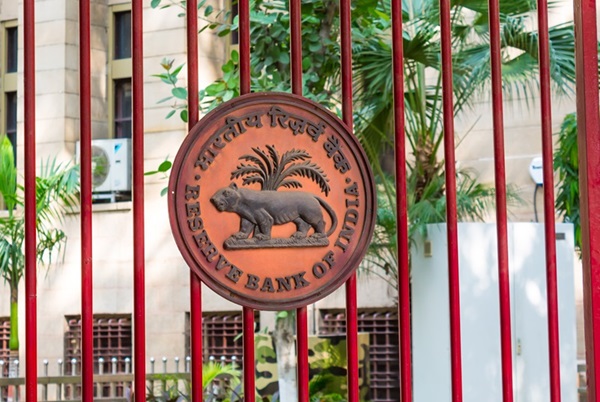.png)

Vivek Kumar, an economist at QuantEco Research, focuses on the Indian economy and specialises in the macro-quantitative intersections in the currency and bond markets.
June 2, 2025 at 6:41 AM IST
Most of the world economy, including India’s can currently be perceived as being in a Schrodinger state. The Schrödinger’s Cat is a famous thought experiment devised by the Austrian-Irish physicist Erwin Schrödinger in 1935.
In this setup, a cat sits in a sealed box containing a flask of poison and a radioactive source. If radioactivity is detected, the poison is released, thereby killing the cat. Otherwise, the cat lives.
As per the Copenhagen interpretation of quantum mechanics at that time, the radioactive atom is in a superposition of states (both decayed and not decayed) until it is observed – this implies that the cat can be both dead and alive at the same time in the closed box.
However, the moment the box is opened and the cat observed, the two “states”, i.e., the living cat and moribund cat – collapse into a single state that is either dead or alive.
Such an experiment, intended to demonstrate the challenges of the Copenhagen interpretation of quantum mechanics when superimposed on everyday objects, makes an interesting analogy for the state of economy, marked by the current state of heightened multifaceted uncertainty.
Take for instance the case of the US reciprocal tariffs.
- Will it serve a blow to the Indian economy? Or would India simply gain schadenfreude benefits from US’s desire to isolate Chinese trade?
- How much of a benefit would India derive from the much-anticipated bilateral trade treaty with the US? Or would India’s BTA with the US lose comparative relevance if other key countries rush into signing their own BTAs with the US?
- Is the Trump administration going to be successful in triggering a paradigm shift in global trade? Or would legal strictures and stakeholders’ interests pose insurmountable obstacles towards this?
- Is this the start of the end of the global multilateral trade system as we know? Or would growing criticism of Trump’s policies in the US eventually sow the seeds for a political course correction from the current path of trade adventurism?
The a priori probability of every outcome would not be different from each other. This implies multiple “states” (Note 1) could be feasible with varied implications for the Indian economy. However, towards the end only one dominant outcome would emerge as reality. While the government is uniquely placed to address this situation, how should the RBI respond?
The central bank cannot afford to take any pre-emptive step since it is nearly impossible to ascertain the “state” of the external shock. It would be wise to be reactive under such a situation and hence preserve as much ammunition as possible for the worst-case scenario.
So how much policy ammunition is available with the RBI?
- The repo rate, currently at 6.00%, has seen a historical low of 4.00% – post COVID.
- The SDF rate that is currently at 5.75% has seen a historical low of 3.35% – the erstwhile reverse repo rate during the COVID period.
- The RBI’s balance sheet size that stood at 23.1% of GDP in 2024-25 has seen a historical high of 28.7% in 2020-21.
In addition, the RBI also has at its disposal considerable degree of regulatory flexibility that we saw getting utilised during previous episodes of global turbulence.
Hence, it would be reasonable to say that the RBI has adequate policy space to support the Indian economy if the “state” of external shock takes a nasty turn.
How much of the available policy space can be deployed? This is where internal priorities would take precedence.
As per estimates by QuantEco Research, India’s GDP growth and CPI inflation are likely to be around 6.4% and 3.8%, respectively, in 2025-26. If realised, the projections indicate that the year would be marked by a negative output gap (Note 2) as well as a negative inflation gap (Note 3).
Undoubtedly, such an outturn deserves an accommodative policy from the central bank. This vindicates MPC’s 50-basis-point rate cut administered since February 2025 along with RBI’s infusion of ₹8.6 trillion worth durable liquidity since December 2024 in addition to the recent transfer of a record high dividend of ₹2.7 trillion in May 2025.
Going forward, the central bank could work with two soft markers to maintain macroeconomic stability in the short-term:
- Maintain a real ex ante policy rate of about 1.5%. This should be seen with respect to recent empirical estimates of neutral interest rate from the RBI that have ranged between 0.8% and 2.1%. The mid-point of this range could be seen as neither too hot nor too cold.
- Maintain a domestic liquidity surplus of around 1.0% of Net Demand and Time Liabilities of the banking system to underscore the accommodative policy stance and hasten the process of monetary policy transmission.
This implies an unambiguous policy space of a cumulative 50 bps rate cut, which could get sequenced between June 2025 and August 2025 policy reviews.
While a further space of 25 bps could potentially emerge if inflation shows additional downside, especially post IMD’s upgrade of rainfall prediction from 5% above average earlier to 6% now for the southwest monsoon season along with passthrough of lower global crude oil prices, this is where policy rectitude would come into play.
- The central bank would need to differentiate between seasonal and durable drivers of disinflation. Undershooting of the inflation target because of correction in food prices needs to be treated with caution, especially when the underlying core inflation appears to be edging up towards the medium-term trend of 4.5-5.0%.
- The MPC would also soon need to start considering the impact of the 8th Pay Commission, to be effective from January 2026, on inflation. Taken together with the recent introduction of cash transfer schemes by several state governments, this could potentially impart upward stickiness to core inflation.
On liquidity, the RBI seems to have already taken proactive measures – post the dividend transfer, the core liquidity in the system has touched 2.6% of NDTL – the headline liquidity could in a phased manner inch upwards. Since this could get higher than the stated comfort (Note 4) level of 1.0% of NDTL, the same could get sequenced via temporary variable rate reverse repo auctions for now.
There is no dearth of policy ammunition for supporting the economy as far as the RBI is concerned. One just needs to be mindful of the Schrödinger’s Cat and the futility of pre-emption in a multi “state” economic world while using the policy space judiciously.
Notes:
1 Multilateral institute like the IMF has switched to provision of scenario based economic forecasts in their latest World Economic Outlook report, from the usual provision of point forecasts.
2 If the current rate of economic growth is lower than its potential growth rate, then the economy is set to be operating with a negative output gap.
3 If the current rate of inflation is lower than the policy target, then the economy is set to be operating with a negative inflation gap.
4 As per the RBI Governor during media interaction post the April 2025 policy meeting.




